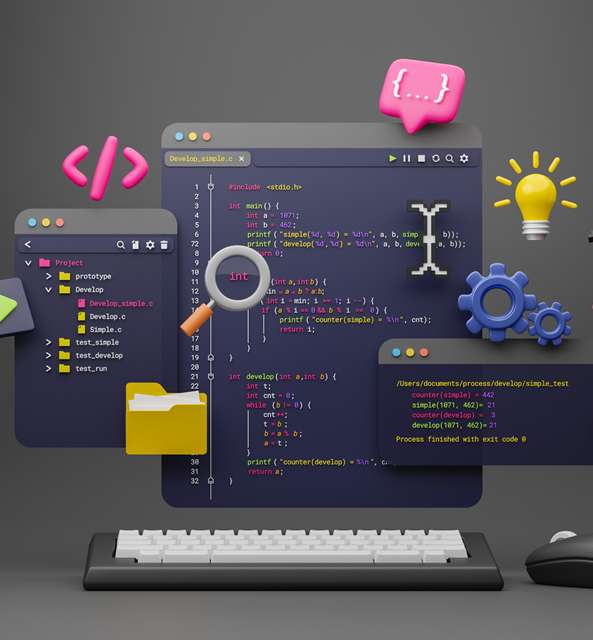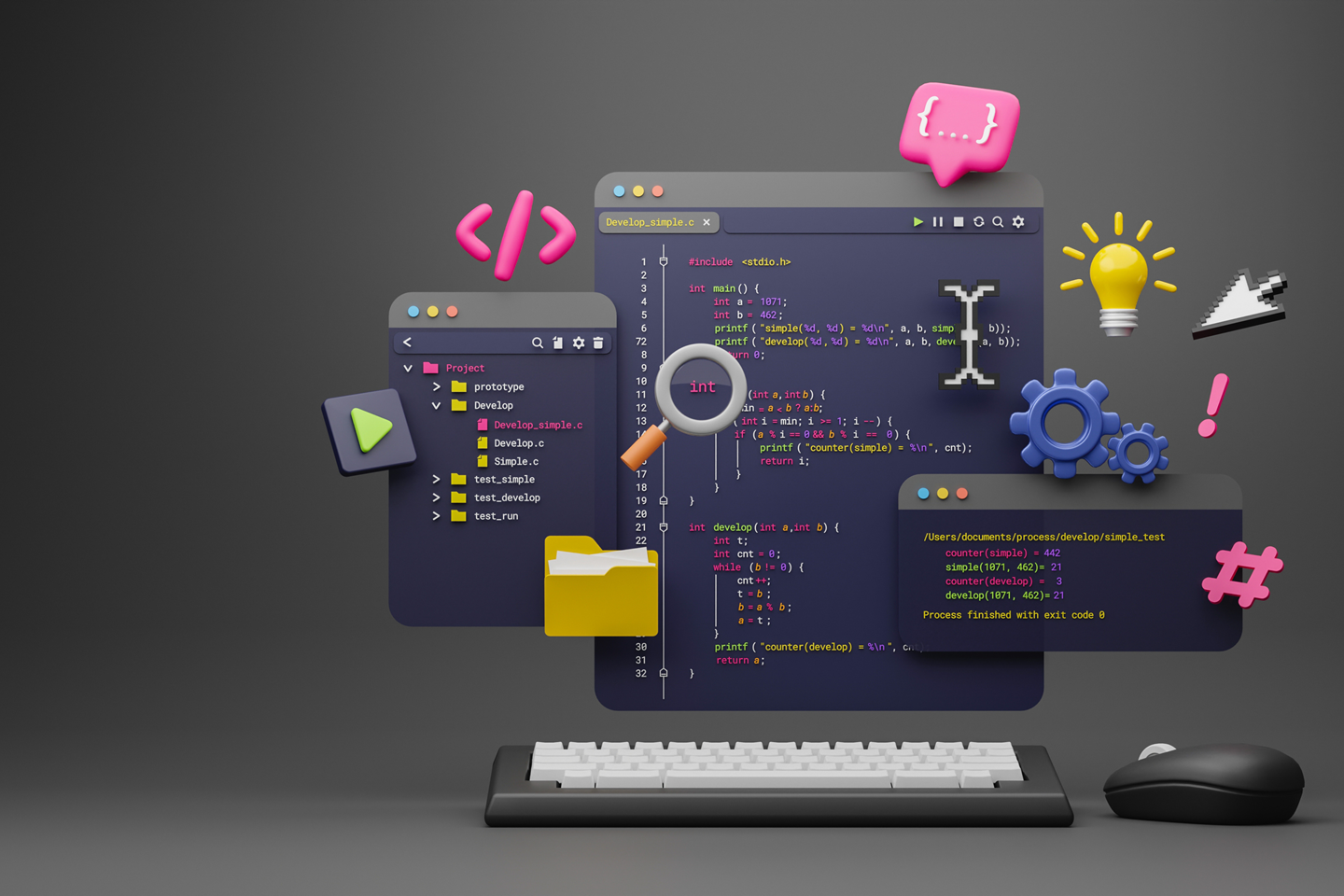
Neeraj Kumar
In today's hyper-personalized digital landscape, the pressure to churn out innovative apps for both mobile and web is real. Adding to that is the stress of managing separate codebases for each platform, which can often feel like a never-ending game of whack-a-mole. The traditional approach of developing apps using native stacks usually results in multiple codebases for the front end. This leads to longer time-to-market, high costs, and inconsistencies.
There's good news, however! New app development frameworks are here to transform the way you build apps. Imagine creating stunning mobile and web experiences with just one codebase.
Intrigued?
Keep reading to learn about the challenges of the old approach, the design methods behind this new way of building apps, and all the amazing benefits it offers (along with a few things to consider).
Multiple codebases: the pain points of the traditional approach
Let’s say you’re building a new app, but instead of focusing on making it awesome, you’re stuck building two separate versions – one for mobile and one for web. And as per the current technology landscape, disparate technologies dominate the web and mobile realm. React and Angular are popular for web app development, and for mobile app development, Native (Kotlin, Swift), React Native, and Flutter are popular.
This divergence is what is referred to as a multiple-code-based approach for the front end. Different languages, different teams, double the work – often leads to slow launches, inconsistency, and skyrocketing costs. This approach inherently lacks agility and cost-effectiveness.

Now let's delve into an alternative approach that can replace the multiple codebase approach.
The single codebase approach is a paradigm shift enabled by the recent technological innovations in the mobile engineering domain. With this approach, developers can build apps for multiple mobile platforms and the web with one codebase while preserving performance and quality.
This model allows the unification of the front end – there is no need to write separate codebases for every channel. Think of it as a universal adapter for your app-building needs!
This innovative concept isn't just a passing fad. It's the future, and companies like Tencent Cloud Chat, Stage, Alibaba, Walmart, Tesla, Myntra, Nubank, and Toyota are already reaping the rewards. Companies and developers recognize the associated benefits, paving the way for a single codebase as the future of app development.
What benefits?
- With shrinking code size, there is less code to write and maintain.
- Productivity quadruples when developers focus on building amazing features instead of managing multiple codebases
- Lightning-fast releases get your app to market faster with a unified approach.
Keep reading to explore more benefits of the single codebase approach.
At present, two standout technologies facilitate the development of mobile and web apps with a single codebase:
1. Flutter with Flutter web: This versatile framework builds cross-platform mobile apps and generates web apps seamlessly.
2. React Native with React Native for Web: This robust solution extends React Native capabilities to the web, offering a unified development experience.
A natural question arises: how can a single codebase effectively adapt to diverse channels with varying screen sizes, user behaviors, and platform nuances?
The answer lies in a strategic design methodology that embraces the native nature of each channel.
Design methodology
To understand the design methodology of the single codebase approach, let’s draw from our experience at Nagarro. Let’s delve into the proven approach that we have adopted for our multichannel e-commerce accelerator.
Take the Product Listing Page (PLP) as an example. Here's a glimpse into our design methodology:
- Tailored UX: We created adaptive screen designs uniquely for mobile and web to optimize the user interface as per the respective screen size of the user.
.png?width=850&height=466&name=Screenshot%202024-04-15%20at%204.45.13%20PM%20(1).png)
Web screen design for PLP.png?width=227&height=492&name=Simulator%20Screen%20Shot%20-%20iPhone%2014%20Pro%20Max%20-%202024-04-15%20at%2018.27.03%202%20(1).png) Mobile screen design for PLP
Mobile screen design for PLP
- Reusable components: We developed modular components encapsulating UI, API calls, and logic. These components can adapt to varying screen sizes based on input parameters.
- Channel-specific screens: We built dedicated container screens for mobile and web, seamlessly loading the appropriate components.
- Channel-Specific Navigation: The correct screen launches based on the requested channel.
- Platform harmonization: We implemented engineering solutions to address other platform nuances, such as the browser back button, URL for address bar, etc.
Advantages of a unified front-end
The single codebase approach is not just about efficiency; it’s also a game-changer as it unlocks your app's whole range of benefits. Here is how adopting the single codebase approach across mobile and web, delivers a multitude of benefits:
- No compromise in performance: A technology like Flutter that operates on the philosophy of coding is focused on delivering a high level of performance. But how? Mainly with built-in features, for instance, Widgets, Animations, Hot reload, etc., that allow developers to create beautiful but high-performing complex applications in a relatively shorter time.
- Faster time-to-market: A single codebase enables code sharing across mobile and web apps. This significantly reduces time to market and helps businesses stay ahead in today's fast-paced digital landscape.
- Market Capacity: Single code-based apps are expected to enhance market penetration. Irrespective of the channel and platform, be it mobile, web or desktop, Android, iOS, or Windows, when using a shared code, the app will serve your users regardless of their platform.
- Testing and maintenance simplified: In a multiple codebase, maintenance for each platform separately can be daunting. A unified codebase simplifies and expedites testing and maintenance.
- Cost-saving: A unified front-end eliminates duplicate efforts, resulting in substantial cost savings. Furthermore, maintenance costs are also minimized as updates will be applied uniformly across both mobile and web platforms.
- Consistency: With the same codebase for mobile and web, updates are deployed simultaneously across both channels, ensuring consistency and uniformity. This seamless synchronization enhances user satisfaction and fosters brand loyalty and trust.
Some nuances to consider with the single codebase approach
Like any other technological advancement, the single codebase approach too has its unique considerations. Here are some aspects to keep in mind:
- Fine-tuning for speed: Being a single-page app, web apps built with this approach can take longer initial load times than traditionally built apps. However, with some caching techniques and code-splitting strategies, this can be easily mitigated and ensure a smooth user experience even for users with slow internet connections.
- Optimizing for search engines: While Flutter and React Native don’t have built-in SEO features, that doesn’t mean your app’s searchability has to suffer. With some additional effort and clever workarounds, you can ensure that your app is discoverable and dominates search results.
Conclusion
It's time to ditch the juggle and struggle of mobile and web apps built on multiple codebases. Single-codebase development is the future that allows you to build high-performing apps with a unified codebase. Imagine the efficiency boost and cost savings!
We at Nagarro are experts in this transformational approach. We can help with the fluidity needed in today's competitive digital landscape with faster launches, reduced costs, and seamless user experiences across all platforms.
Connect with us to build your future-proof app together!




